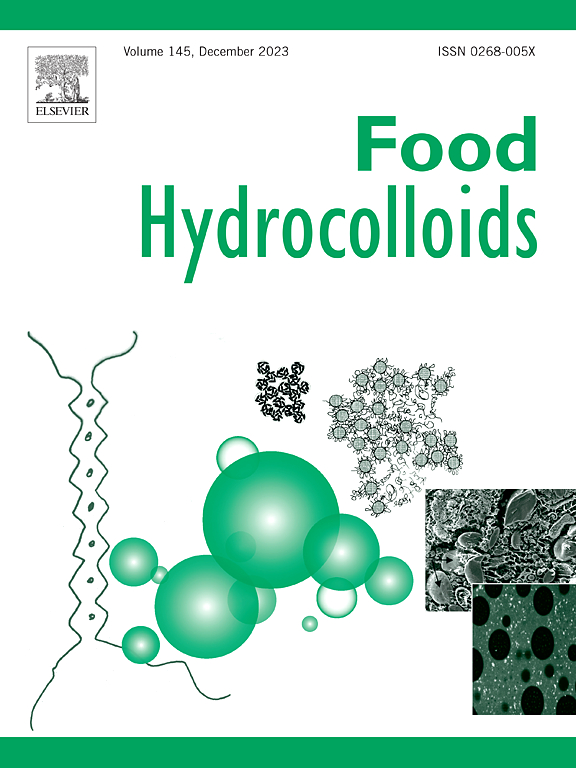Conjugation of flaxseed protein and plant polysaccharides: Process optimization, structural characterization and technical-function evaluation
IF 11
1区 农林科学
Q1 CHEMISTRY, APPLIED
引用次数: 0
Abstract
In this study, the covalent conjugation conditions of flaxseed protein isolate (FPI) with flaxseed gum (FG), oat β-glucan (BG), and soybean polysaccharide (SP) were optimized separately using the ultrasound-assisted (U) method. The effects of the conjugation on the structure, function, and antioxidant properties of FPI were explored based on the optimal conditions. The results showed that the infrared absorption peaks of FPI in each sample changed and shifted in amide I and II bands after conjugation, indicating the progression of the Maillard reaction. Fluorescence intensity decreased and red-shifted emission peaks (10–15 nm), suggesting increased protein unfolding and improved hydrophilic interactions. Moreover, conjugation decreased the intensity of the UV absorption peaks, with the maximum absorption shifting to shorter wavelengths. Further validated the structural modifications associated with the Maillard reaction. Ultrasound-assisted conjugation also improved the functional properties in all samples, especially FPI-FG-U showed the best foaming capacity (improved to 80.39 %) and emulsification activity and stability (increased to 64.95 m2/g and 51.80 %), confirmed the correlation between structural changes and functional improvements. ABTS+ and DPPH radical scavenging experiments showed that the antioxidant capacity of FPI was enhanced by covalent conjugation. This study shows that the functional performance of FPI can be extended by covalently linking a combination of sonication, thus broadening their potential uses in the food sector and beyond.

求助全文
约1分钟内获得全文
求助全文
来源期刊

Food Hydrocolloids
工程技术-食品科技
CiteScore
19.90
自引率
14.00%
发文量
871
审稿时长
37 days
期刊介绍:
Food Hydrocolloids publishes original and innovative research focused on the characterization, functional properties, and applications of hydrocolloid materials used in food products. These hydrocolloids, defined as polysaccharides and proteins of commercial importance, are added to control aspects such as texture, stability, rheology, and sensory properties. The research's primary emphasis should be on the hydrocolloids themselves, with thorough descriptions of their source, nature, and physicochemical characteristics. Manuscripts are expected to clearly outline specific aims and objectives, include a fundamental discussion of research findings at the molecular level, and address the significance of the results. Studies on hydrocolloids in complex formulations should concentrate on their overall properties and mechanisms of action, while simple formulation development studies may not be considered for publication.
The main areas of interest are:
-Chemical and physicochemical characterisation
Thermal properties including glass transitions and conformational changes-
Rheological properties including viscosity, viscoelastic properties and gelation behaviour-
The influence on organoleptic properties-
Interfacial properties including stabilisation of dispersions, emulsions and foams-
Film forming properties with application to edible films and active packaging-
Encapsulation and controlled release of active compounds-
The influence on health including their role as dietary fibre-
Manipulation of hydrocolloid structure and functionality through chemical, biochemical and physical processes-
New hydrocolloids and hydrocolloid sources of commercial potential.
The Journal also publishes Review articles that provide an overview of the latest developments in topics of specific interest to researchers in this field of activity.
 求助内容:
求助内容: 应助结果提醒方式:
应助结果提醒方式:


